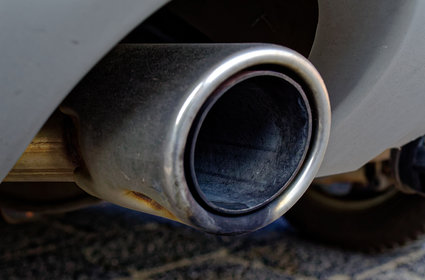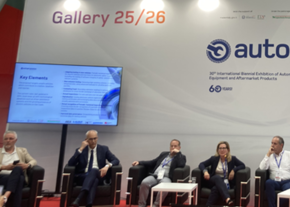
26/11/2018
Cars and Wltp: new emission control standard, how does it work
Gennaro Speranza
The Wltp is now a reality: from September 1st 2018, all new cars must be certified through new consumption and emissions detection tests prior to their registration. Here is what changes compared to the old Nedc cycle.
The automotive world has recently welcomed what had already been announced as a revolution: as of September 1, 2018, the Wltp (acronym for Worldwide harmonized light vehicles test procedures) a new vehicle type-approval procedure, came into force, sending into retirement the old Nedc cycle (New European drive cycle).
The old Nedc cycle
The old NEDC protocol dates back to 1990, when diesel particulate filters did not even exist, and therefore had to be considered outdated. The tests, performed indoors on roller benches, have recently been accused of supplying deceptive fuel consumption and polluting emissions data, far from real driving conditions, with differences in the region of 38% on average, according to a study by the international council of clean transportation. Additionally, the Nedc cycle must be considered obsolete also in view of recent technological developments. Nowadays, in fact, cars are equipped with an ever increasing quantity of new hi-tech devices able to strongly influence fuel consumption (and consequently CO2 emissions), such as all-wheel drive systems or on-board gadgets designed to make life on the road as comfortable as possible, from climate control to heated rear window, heated seats and a riot of other electronic devices and components. Not to mention the way we drive. Over the years, traffic has grown bringing with it congestions in urban areas which often make travelling a harrowing and inefficient experience. For these reasons the Nedc was replaced with a more modern, efficient and realistic test cycle, the Wltp system, currently in force throughout the EU as well as Japan, and expected to be endorsed by China, India and South Korea between 2020 and 2021 (in the United States, the EPA tests chosen by the US Environmental Protection Agency will continue to be in use).
From Nedc to Wltp: what is the difference
The new Wltp procedure, though still a lab test, is performed with more realistic and restrictive cycles than the old Nedc cycle, and should reproduce real driving conditions as faithfully as possible. Thus we find changes in the duration of the test (30 minutes instead of 20), higher average and maximum speed (from 34 to 46.5 km/h and from 120 to 131 km/h respectively) and a longer test distance (11 to 23.25 km). The new test includes also shorter stops (from 22.6% to 13.4%). In addition, in order to make CO2 emissions control as realistic as possible, also the vehicle’s optional equipment is taken into consideration as this may affects weight, aerodynamics and friction.
Rde, a whole different ball game
Besides lab tests, the European Union has further planned for a set of road tests to be carried out as well, in its quest for more realistic and precise data. The procedure, known as Rde (Real Driving Emissions), is currently used to detect only the amount of nitrogen oxides and particulate produced by a vehicle. Rde tests are carried out with special high-precision equipment known as PEMS (Portable emission measuring systems), and take into account parameters such as external temperature, low and high altitude, up-and-down-hill driving, the type of road and the vehicle’s load. In order to conform to the new Rde tests, manufacturers have already started to equip newly approved vehicles with SCR systems and urea-based additives, in an effort to reduce NOx in diesel cars, as well as particulate filters on petrol engines.
Carmakers get involved
However, as these values will be significantly more realistic and precise, it is foreseeable that, on vehicles driven by combustion engines, data on fuel consumption and emissions will be updated upwards, while EVs will see their expected mileage drop slightly. As one would expect, car manufacturers will be heavily involved by the implementation of the new Wltp protocol, which means massive organizational changes (all new models on sale, in fact, have had to pass this new type-approval test) and make significant investments on new engines.
Any news for motorists?
But how will the new Wltp protocol affect the average motorist? Not much really: one will be able to make a slightly more realistic evaluation of fuel costs but will still have to rely, as always, on data made available by car manufacturers when comparing different models to find which one uses less fuel. To help drivers make a well-informed decision especially as far as fuel consumption and emissions are concerned, it is important to remember that recent car labelling directives require car dealers and manufacturers to provide information relevant for the consumer, including a label clearly displaying a vehicle’s CO2 emissions and fuel consumption, which must be placed on or near all new cars on sale in a showroom. The design of these labels is defined nationally, but contain all the CO2 and fuel consumption values measured in lab tests and found on the vehicle’s official certificate of conformity.
The future
The Wltp procedure is mandatory on all cars registered after the 1st September 2018. Until the end of 2020, both Wltp and Nedc fuel consumption and CO2 emissions values will be displayed on all new vehicle documents. Nedc values, in fact, will still be used to evaluate the average emissions on cars registered in the EU until the end of 2020. From 2021 onward, Wltp data will be the only acceptable values on new vehicle registrations.
The old Nedc cycle
The old NEDC protocol dates back to 1990, when diesel particulate filters did not even exist, and therefore had to be considered outdated. The tests, performed indoors on roller benches, have recently been accused of supplying deceptive fuel consumption and polluting emissions data, far from real driving conditions, with differences in the region of 38% on average, according to a study by the international council of clean transportation. Additionally, the Nedc cycle must be considered obsolete also in view of recent technological developments. Nowadays, in fact, cars are equipped with an ever increasing quantity of new hi-tech devices able to strongly influence fuel consumption (and consequently CO2 emissions), such as all-wheel drive systems or on-board gadgets designed to make life on the road as comfortable as possible, from climate control to heated rear window, heated seats and a riot of other electronic devices and components. Not to mention the way we drive. Over the years, traffic has grown bringing with it congestions in urban areas which often make travelling a harrowing and inefficient experience. For these reasons the Nedc was replaced with a more modern, efficient and realistic test cycle, the Wltp system, currently in force throughout the EU as well as Japan, and expected to be endorsed by China, India and South Korea between 2020 and 2021 (in the United States, the EPA tests chosen by the US Environmental Protection Agency will continue to be in use).
From Nedc to Wltp: what is the difference
The new Wltp procedure, though still a lab test, is performed with more realistic and restrictive cycles than the old Nedc cycle, and should reproduce real driving conditions as faithfully as possible. Thus we find changes in the duration of the test (30 minutes instead of 20), higher average and maximum speed (from 34 to 46.5 km/h and from 120 to 131 km/h respectively) and a longer test distance (11 to 23.25 km). The new test includes also shorter stops (from 22.6% to 13.4%). In addition, in order to make CO2 emissions control as realistic as possible, also the vehicle’s optional equipment is taken into consideration as this may affects weight, aerodynamics and friction.
Rde, a whole different ball game
Besides lab tests, the European Union has further planned for a set of road tests to be carried out as well, in its quest for more realistic and precise data. The procedure, known as Rde (Real Driving Emissions), is currently used to detect only the amount of nitrogen oxides and particulate produced by a vehicle. Rde tests are carried out with special high-precision equipment known as PEMS (Portable emission measuring systems), and take into account parameters such as external temperature, low and high altitude, up-and-down-hill driving, the type of road and the vehicle’s load. In order to conform to the new Rde tests, manufacturers have already started to equip newly approved vehicles with SCR systems and urea-based additives, in an effort to reduce NOx in diesel cars, as well as particulate filters on petrol engines.
Carmakers get involved
However, as these values will be significantly more realistic and precise, it is foreseeable that, on vehicles driven by combustion engines, data on fuel consumption and emissions will be updated upwards, while EVs will see their expected mileage drop slightly. As one would expect, car manufacturers will be heavily involved by the implementation of the new Wltp protocol, which means massive organizational changes (all new models on sale, in fact, have had to pass this new type-approval test) and make significant investments on new engines.
Any news for motorists?
But how will the new Wltp protocol affect the average motorist? Not much really: one will be able to make a slightly more realistic evaluation of fuel costs but will still have to rely, as always, on data made available by car manufacturers when comparing different models to find which one uses less fuel. To help drivers make a well-informed decision especially as far as fuel consumption and emissions are concerned, it is important to remember that recent car labelling directives require car dealers and manufacturers to provide information relevant for the consumer, including a label clearly displaying a vehicle’s CO2 emissions and fuel consumption, which must be placed on or near all new cars on sale in a showroom. The design of these labels is defined nationally, but contain all the CO2 and fuel consumption values measured in lab tests and found on the vehicle’s official certificate of conformity.
The future
The Wltp procedure is mandatory on all cars registered after the 1st September 2018. Until the end of 2020, both Wltp and Nedc fuel consumption and CO2 emissions values will be displayed on all new vehicle documents. Nedc values, in fact, will still be used to evaluate the average emissions on cars registered in the EU until the end of 2020. From 2021 onward, Wltp data will be the only acceptable values on new vehicle registrations.
| WLTP | NEDC | |
| Cycle duration | 30 minutes | 20 minutes |
| Cycle distance | 23,25 km | 11 km |
| Maximum speed | 131 km/h | 120 km/h |
| Average speed | 46,5 km/h | 34 km/h |
| Stationary time proportions | 13,4% | 22,6% |
| Temperatures | Values at 23°C | Values between 20-30°C |
| Effect of optional and special equipment | Yes | No |






